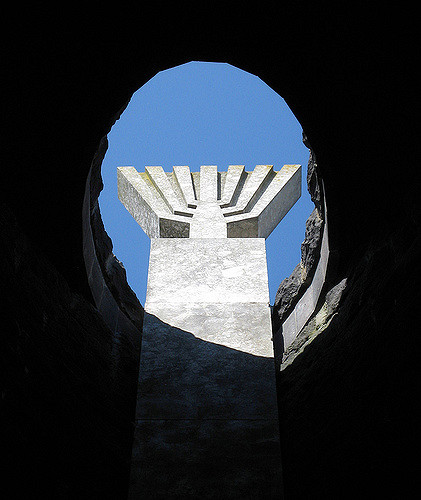Do you find the Bible boring? I used to. But then four letters of the alphabet changed my life: JEPD. No, they don’t represent a Myers-Briggs score (about as valid as astrology). Those letters provided me with much greater wisdom, a path to understanding the Torah and, from there, the world.
In Jewish school, I was taught that Moses wrote the Torah, as dictated by God. Strangely, though I questioned God, I never questioned Mosaic authorship of the Five Books of Moses, even when he appeared to write about his own death! The stories became familiar, but stale and uninspiring. Then, at Dawson College, my wonderful professors explained the documentary hypothesis. This theory turned my world upside down by providing a plausible explanation of how the Bible came to be, and what it really said.
The documentary hypothesis, developed by German biblical scholars in the 19th century, divides the Torah into four authors, or sources, represented by the letters JEPD. The sources were written centuries apart between 950 and 500 BCE, and reflect the four authors’ different priorities, from narrative to law to ritual.
According to the theory, J, the oldest, stands for Jehovah, a mistranslation of Yahweh, God’s name spelled yud-hay-vav-hay in Hebrew and appearing as “Lord” in English translations. The next oldest, E, stands for Elohim, the Hebrew word for God. J writes about the Lord at the Tower of Babel, while E depicts Elohim at the binding of Isaac. P, the latest source, was written by priests. D is for Deuteronomy, an independent text. Eventually, an editor, perhaps the scribe Ezra (450 BCE), wove them together into the unified Torah we have today. Occasionally, cracks in that unity emerge, and that’s when the Bible really comes alive.
READ: FINDING GOD ON THE SILVER SCREEN
For example, in the beginning of Genesis, there are two distinct Creation stories. First God creates the world in six days, including man “in the image of God,” and rests on Shabbat. Then an entirely separate story describes Adam made from dust, Eve from Adam’s rib, and that mischievous snake in the Garden of Eden. Why two inconsistent accounts of Creation? Two different authors.
The documentary hypothesis enabled an empowering interpretation. J’s Adam and Eve story, untethered from P’s bland “let there be light” introduction, radically teaches that human beings aspire to be “as gods.” When Eve took the forbidden fruit, she boldly asserted her free will, liberating humanity from child-like dependence.
Like most theories, the documentary hypothesis is not airtight. Many scholars question it, or argue over dates and details. Nonetheless, it remains foundational to the academic study of Torah. If you want to know more, read Who Wrote the Bible? by Richard Elliott Friedman, or just Google “JEPD.”
If you adopt the documentary hypothesis, you’ll find the Bible a different book, a literary and historical text, not simply a religious one. The authors were irreverent, and their stories wild and entertaining. I discovered that Noah was a drunk, Isaac was rather dim-witted and Jacob was kind of a jerk. The characters, like the text, were humanized and more relatable. A great tool for keeping Jewish youth engaged in Judaism has been right before our eyes, but we’ve been teaching it wrong the whole time.
I’m not suggesting introducing the documentary hypothesis to 10-year-olds, but Jewish students in grades 11 and 12 can handle it. It will make the Bible exciting, like detective work. It will also teach them to question assumptions, challenge conventional wisdom and approach all sources with skepticism.
Even more, the documentary hypothesis will bolster their Jewish pride. Rather than a divine text, the Bible is the creation of generations of Israelites, flesh and blood human beings, a triumph of cultural achievement. Instead of representing God’s gift to the Jews, the Torah becomes the Jewish People’s gift to humankind, one that inspires with each new interpretation.







